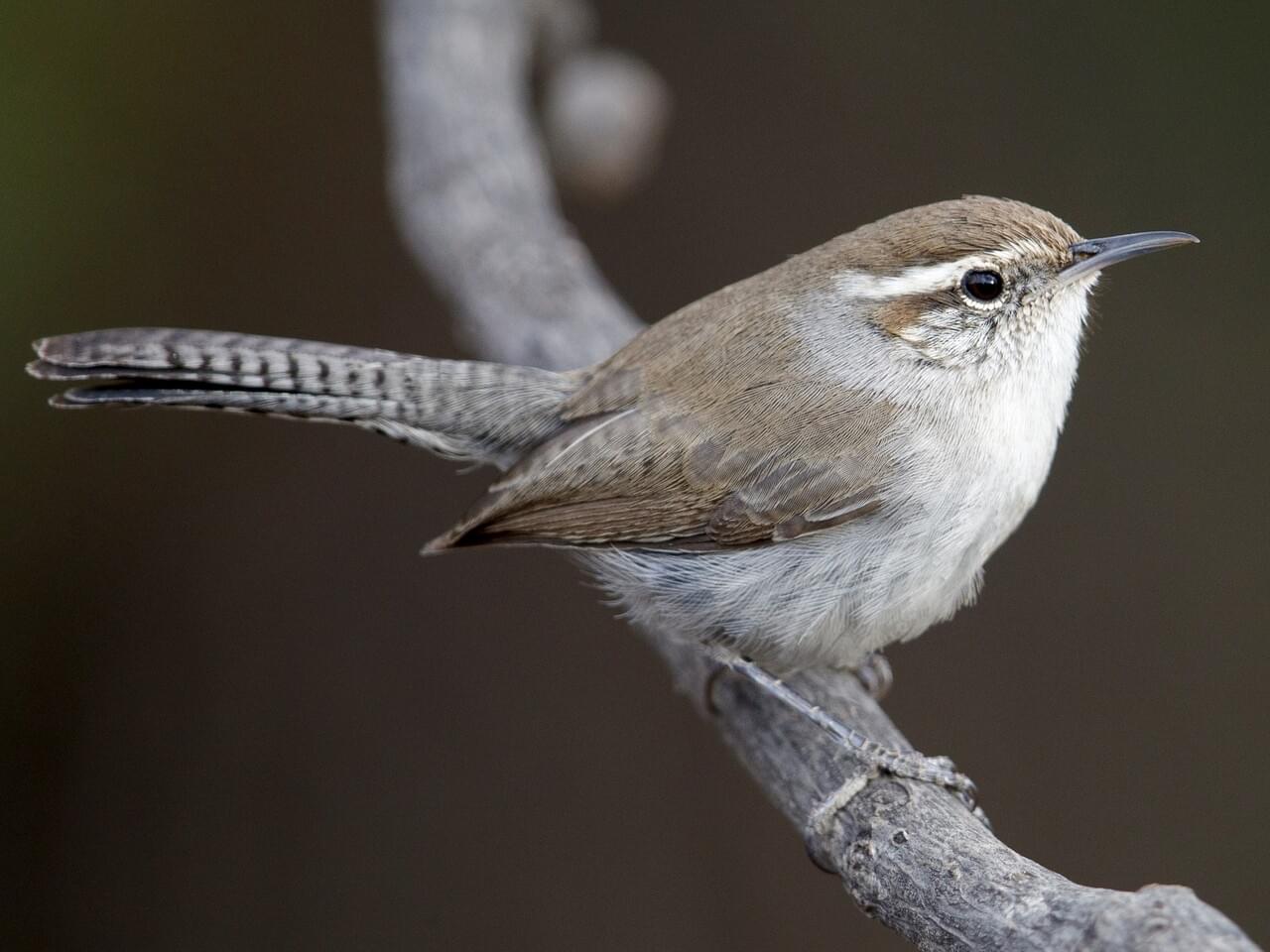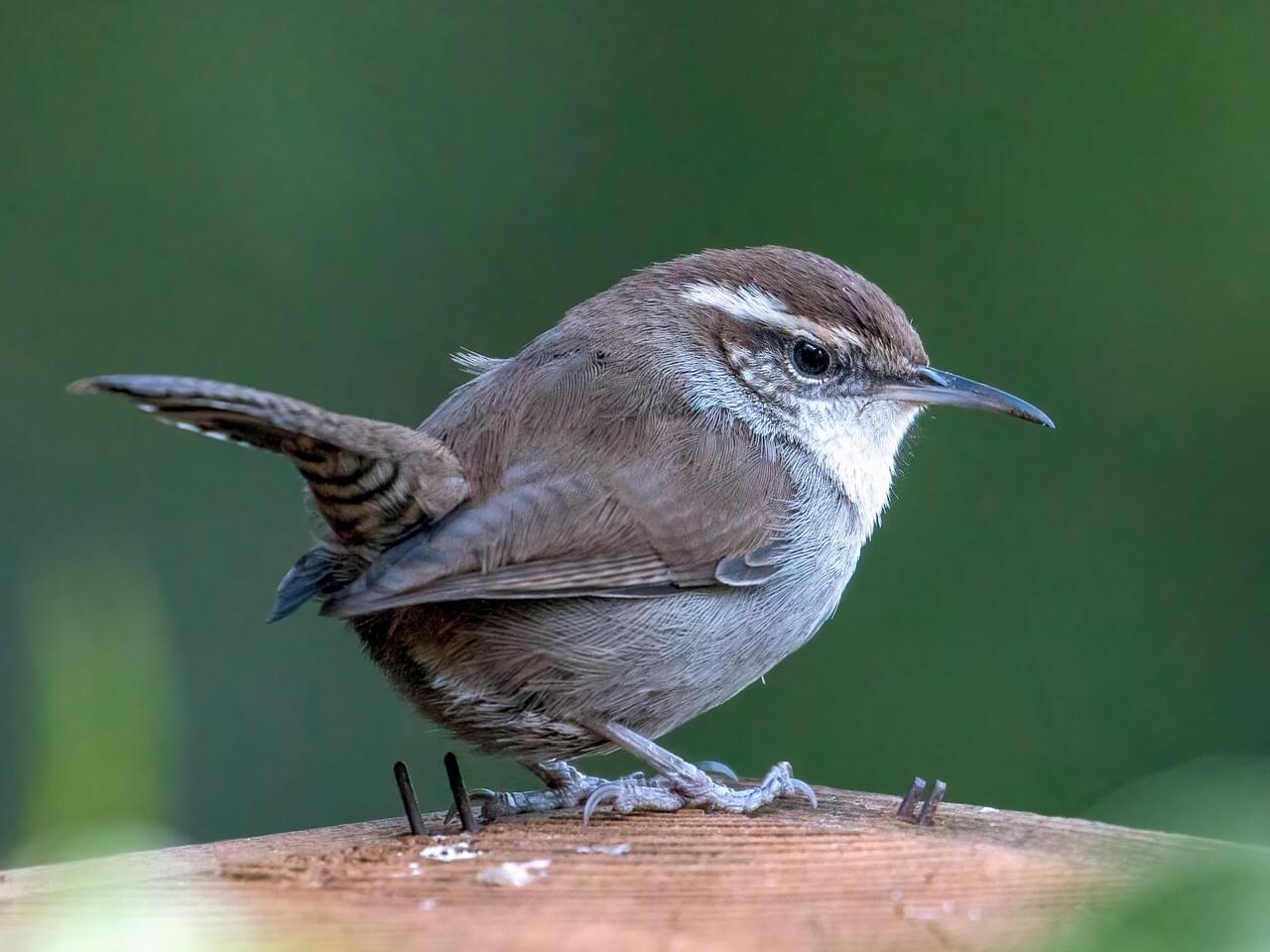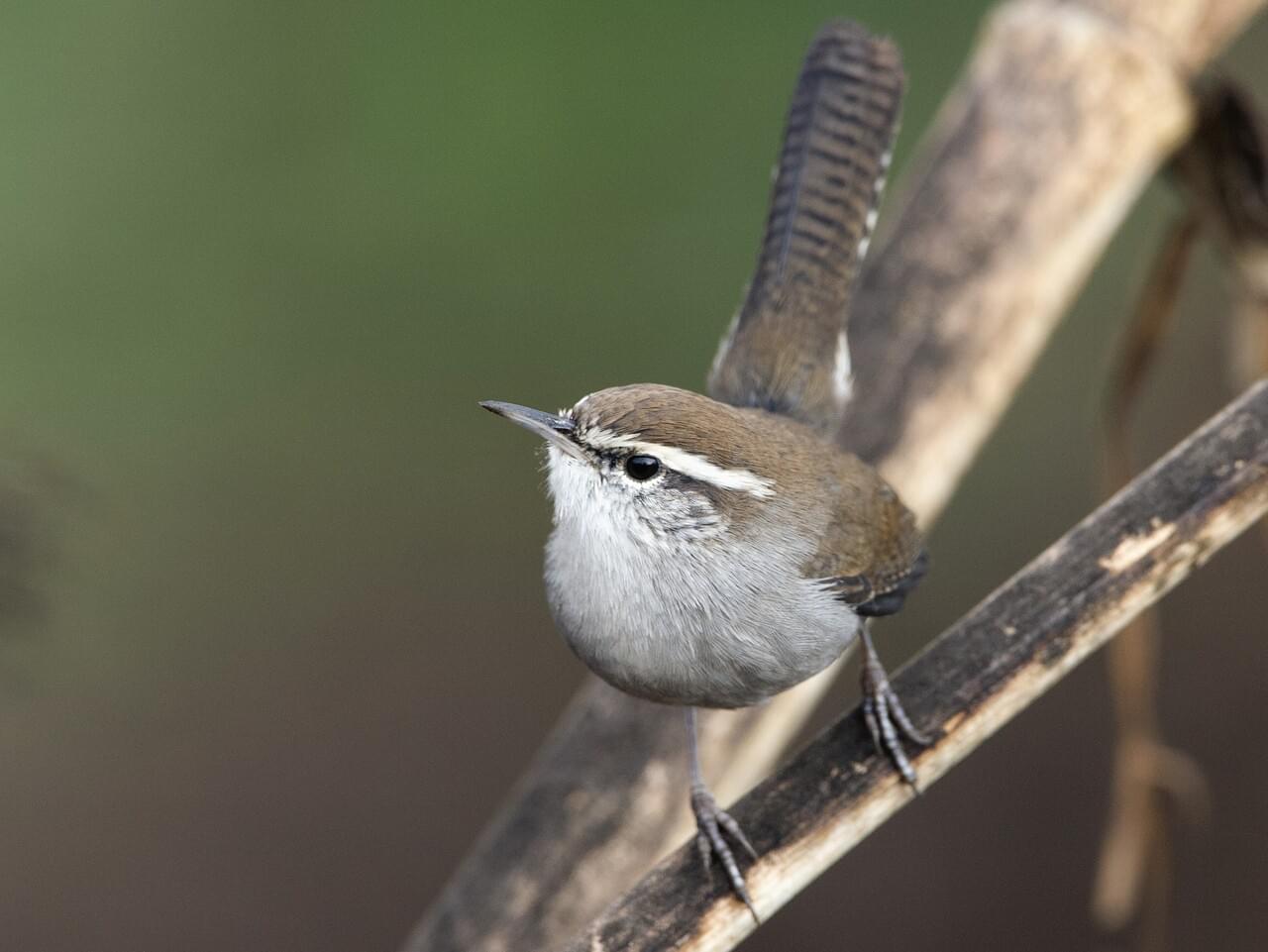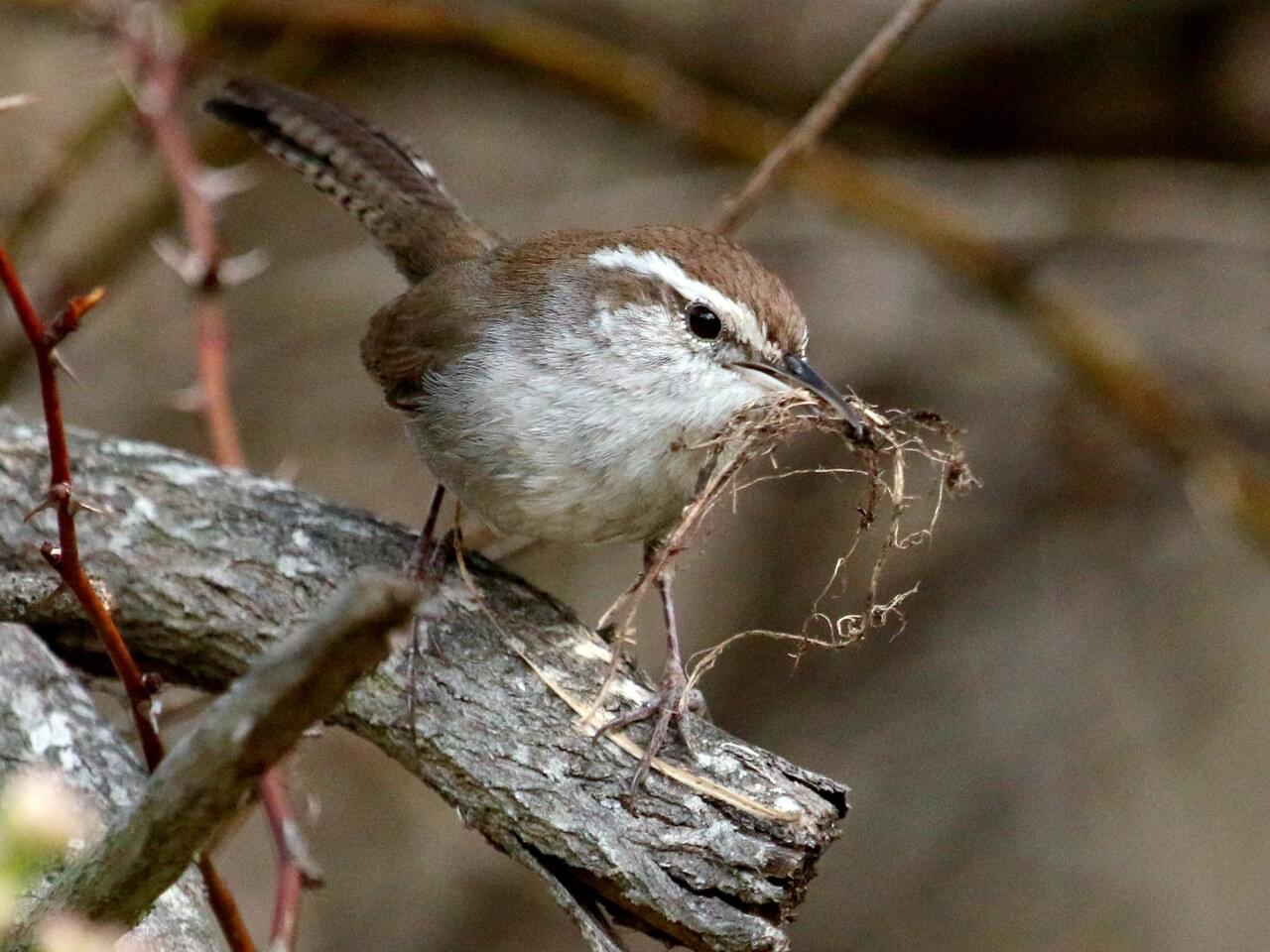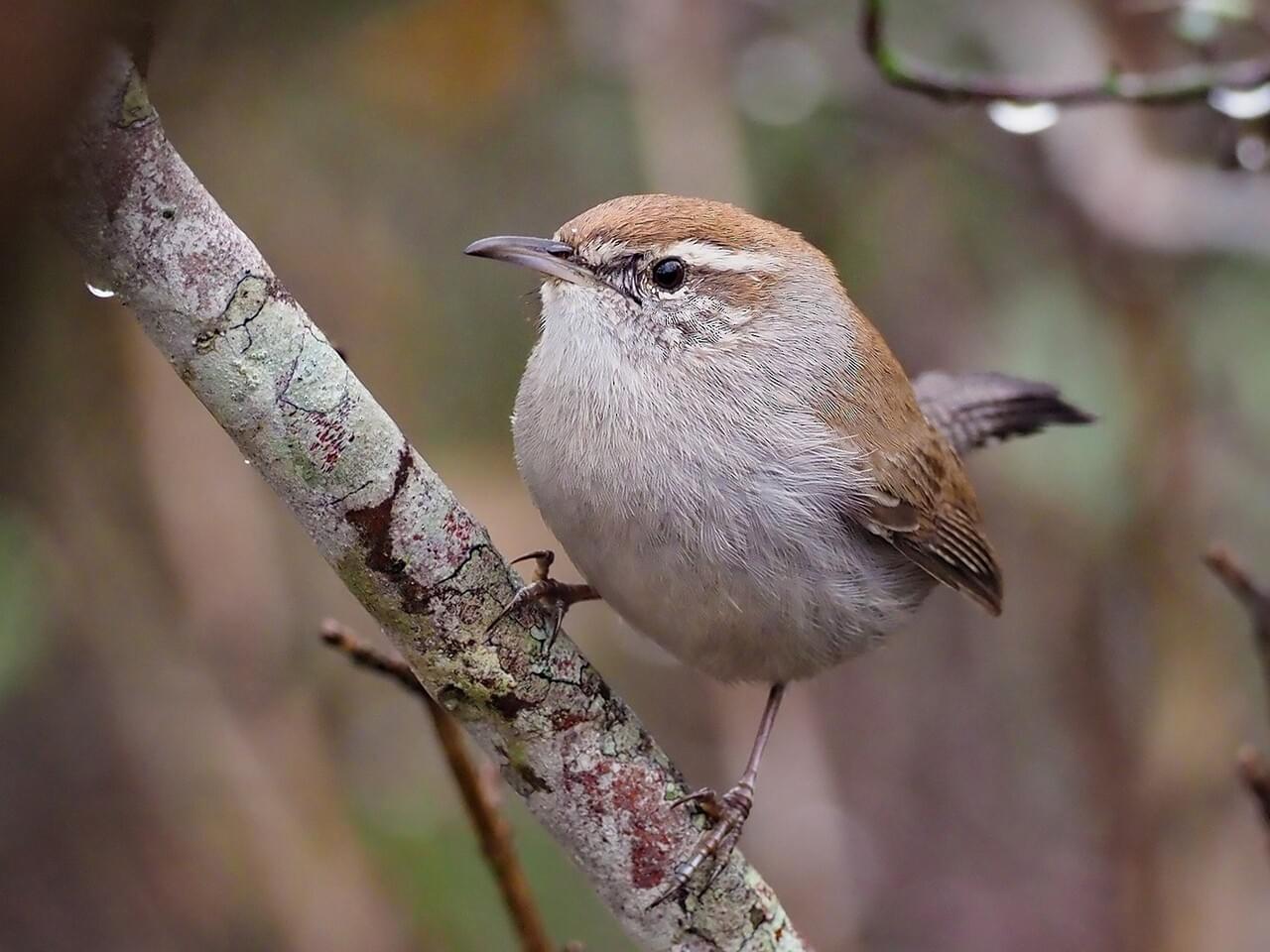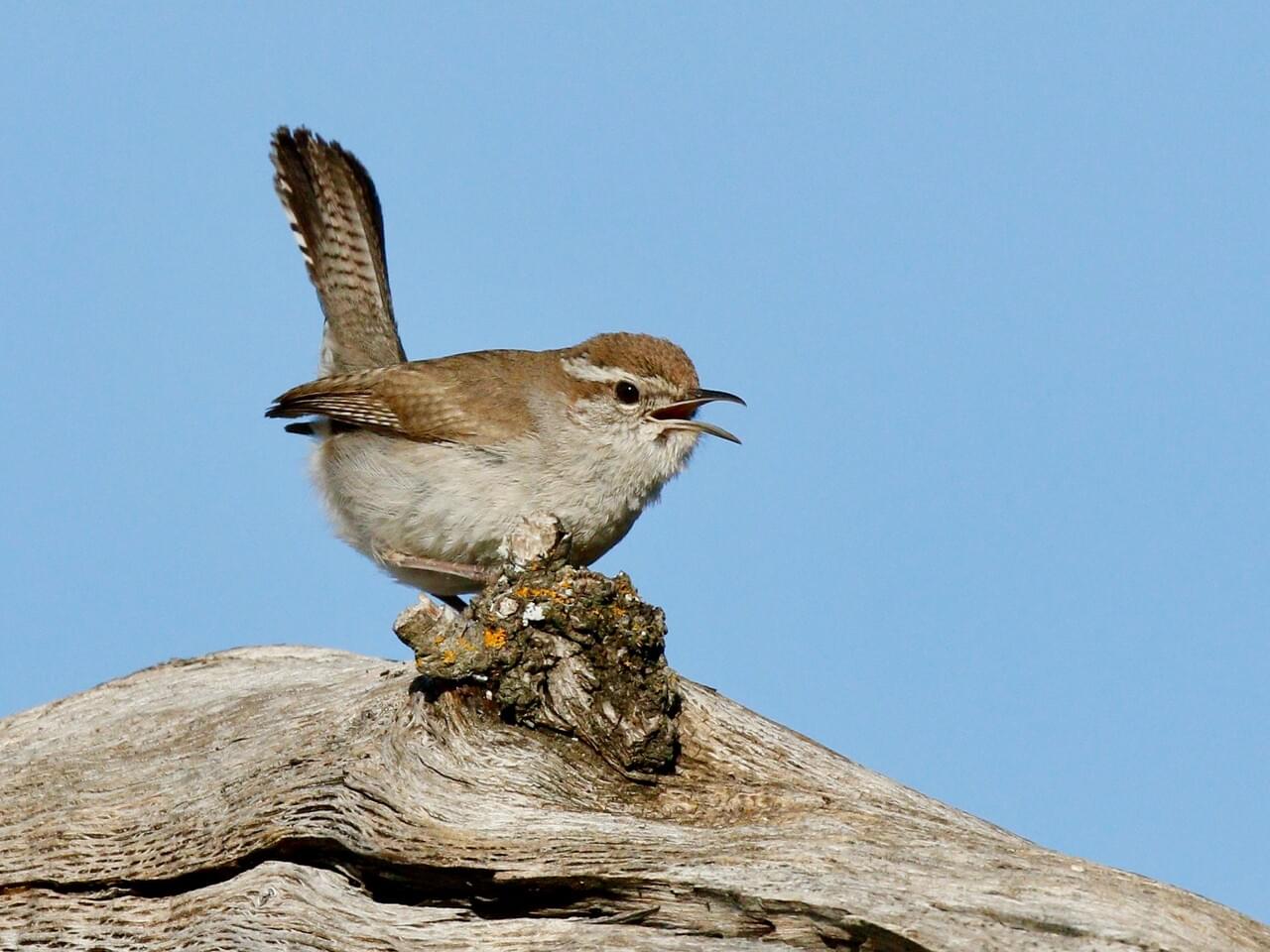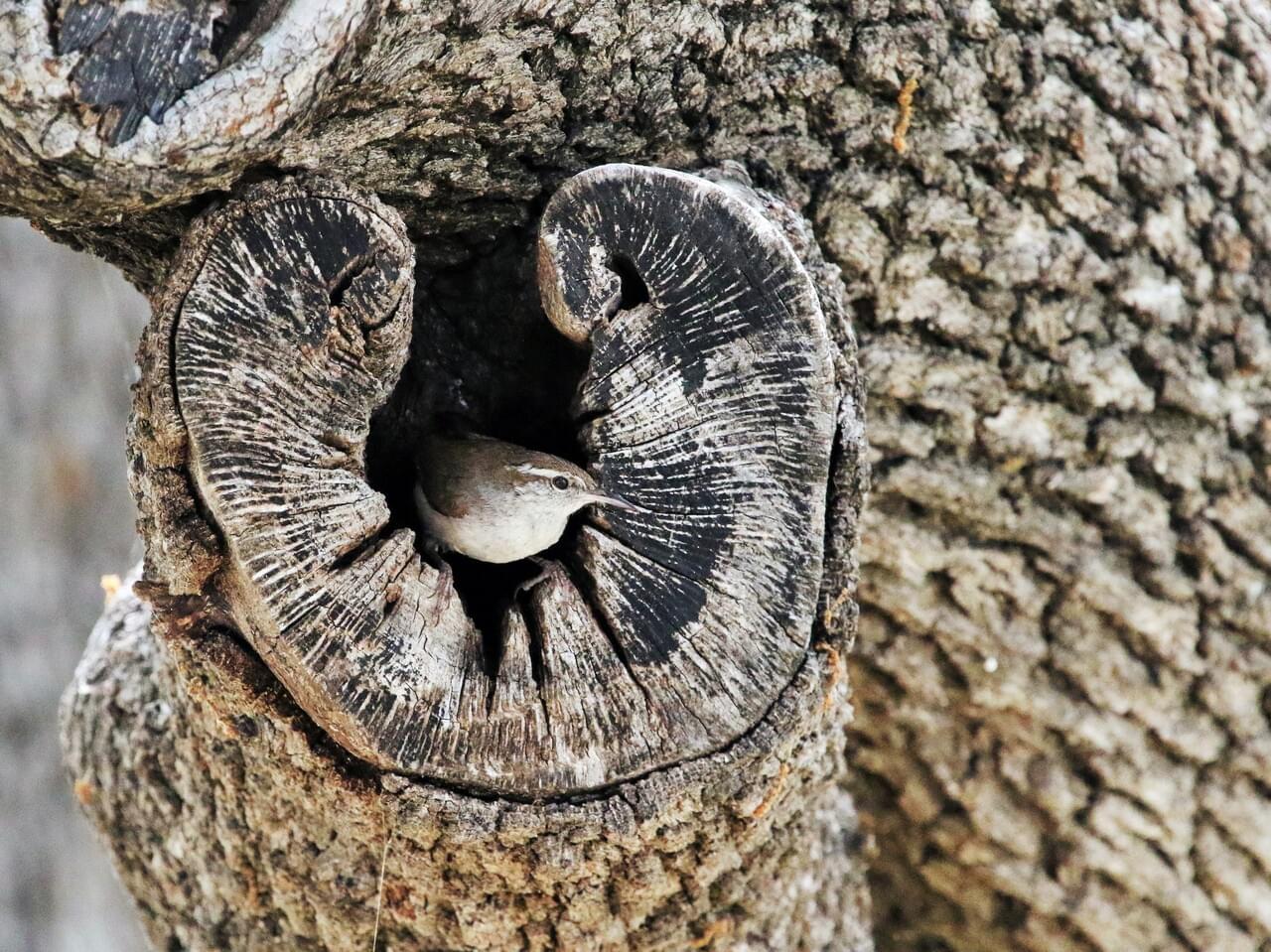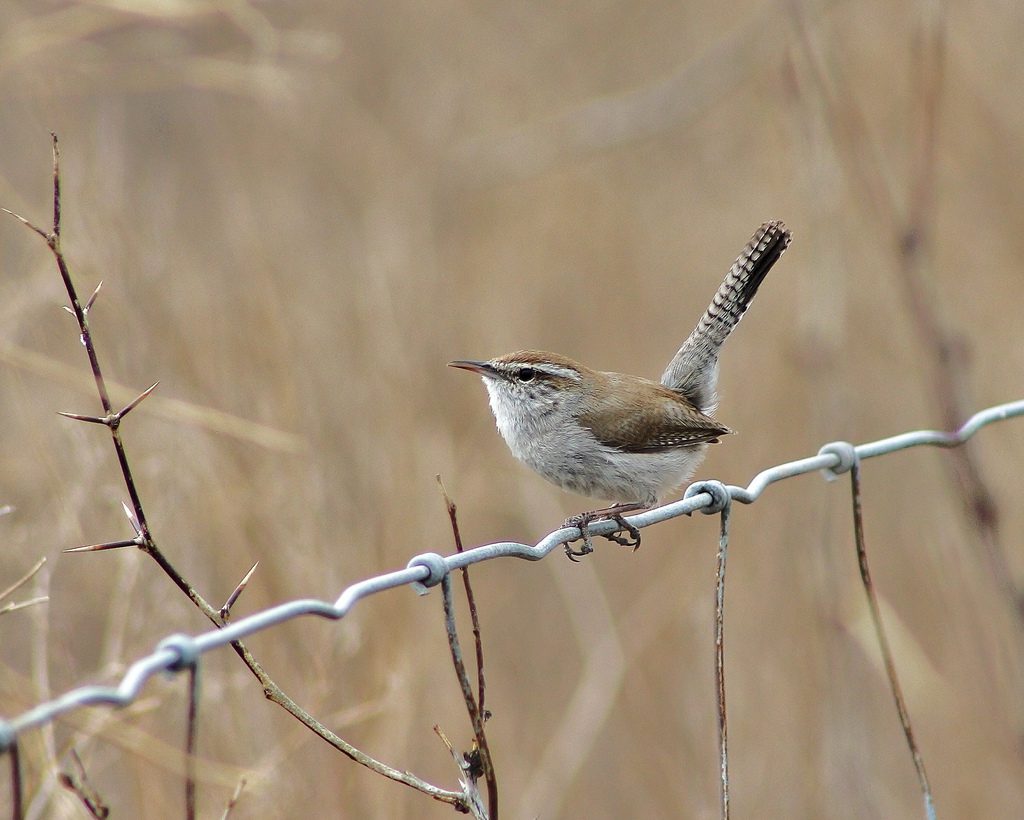 Photo ©
Tripp Davenport
Photo ©
Tripp Davenport
Bewick’s Wren
Regional Species
If you come across a noisy, hyperactive little bird with bold white eyebrows, flicking its long tail as it hops from branch to branch, you may have spotted a Bewick’s Wren. These master vocalists belt out a string of short whistles, warbles, burrs, and trills to attract mates and defend their territory, or scold visitors with raspy calls. Bewick’s Wrens are still fairly common in much of western North America, but they have virtually disappeared from the East.
Range
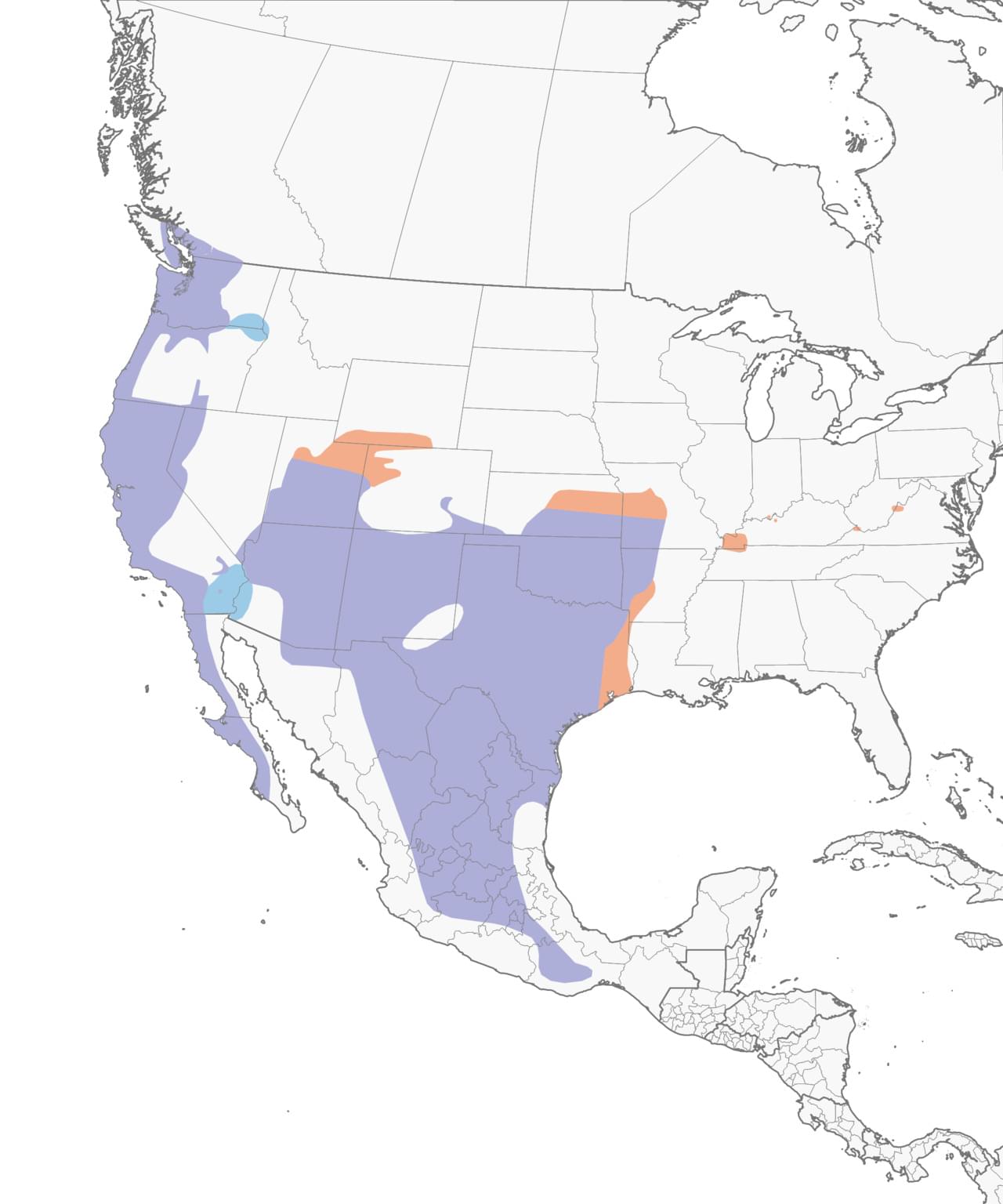
Habitat
Bewick’s Wrens favor brushy areas, scrub and thickets in open country, or open woodland. Depending on where you live, you may find them in chaparral-covered hillsides, oak woodlands, mixed evergreen forests, desert scrub, stands of prickly pear and other cacti, mesquite and century plant, willows and tamarisk, hedgerows, or suburban plantings. Bewick’s Wrens normally breed in areas that contain a mixture of thick scrubby vegetation and open woodland.
Food
Bewick’s Wrens eat the eggs, larvae, pupae, and adults of insects and other small invertebrates. Common prey animals include bugs, beetles, bees and wasps, caterpillars, butterflies, moths, grasshoppers, crickets, flies, and spiders. Bewick’s Wrens also occasionally eat seeds, fruit, and other plant matter, especially in winter. Bewick’s Wren nestlings receive mostly caterpillars, spiders, grasshoppers, and insect pupae. Adults sometimes consume pebbles and mud, perhaps for nutrients or to help with the grinding digestion of their food.
Behavior
Nimble and acrobatic, Bewick’s Wrens often hang upside down as they glean insects and spiders from trunks, branches, and leaves. They usually forage in the undergrowth less than 10 feet up, or peck at the ground between short hops. Occasionally they’ll catch insects on the wing. Seizing a prey animal in its bill, a Bewick’s Wren crushes it, shakes it, or bashes it against a branch. Having thus subdued its food, the wren swallows it whole. After a meal, this bird like many others may use its twig perch as a napkin, wiping its bill as many as 100 times. When it leaves the cover of vegetation, a Bewick’s Wren typically darts straight for its destination in a quick, level flight. A male’s weapon of choice for year-round territorial defense is his singing voice. Dueling crooners perch within about 20 feet of each other to trade a barrage of competing songs and harsh calls. Males may also give chase to fellow Bewick’s Wrens or House Wrens that impinge on their territory. (The House Wren usually wins.) During courtship, the male may feed the female, or spread his tail and turn from side to side; the female utters hoarse begging calls or a high clear note. The Bewick’s Wren often cocks its long tail and wags it from side to side, sometimes fanning the feathers.
Nesting
The Bewick’s Wren’s cup-shaped nest has a base of sticks, grasses, rootlets, leaves, moss, or other plant materials, depending on what the local environment provides. Many contain spider egg cases. The open cup may be lined with feathers, wool, hair, or plant down, with a final inner lining of snakeskin. The male initiates nest building; both sexes participate. The construction process usually takes less than 8 days, though sometimes it can stall for long periods and require weeks to complete. The nest is about 2.5 to 3 inches high and 4 or 5 inches in diameter, the cup about 1-2 inches deep and 2-2.5 inches in diameter.
Appearance
Typical Sound

© Wil Hershberger / Macaulay Library
Size and Shape
Bewick’s Wrens are medium-sized wrens with a slender body and a strikingly long tail often held upright. They have slender, long bills that are slightly downcurved.
Color Pattern
Bewick’s Wrens are subdued brown-and-gray wrens with a long, brow-like white stripe over the eye. The back and wings are plain brown; underparts gray-white; and the long tail is barred with black and tipped with white spots. Males and females look the same.
Plumage Photos
Similar Species
Carolina Wrens are plumper, shorter-tailed, and more reddish-brown than Bewick's Wrens. Their ranges now overlap only in a limited part of the central U.S. Carolina Wrens have a sweet, rolling song, much different from the Bewick's Wren's jumble of notes, which can be reminiscent of a Song Sparrow. House Wrens are smaller birds with shorter tails and are much darker brown overall, particularly the underparts. In the West, Bushtits share habitat with Bewick’s Wrens but are smaller, more slender, plain gray birds that usually travel in small, twittering flocks. Wrentits are an even gray-brown, without the pale underparts or eyebrow stripe of Bewick's Wrens. Their simple, descending, whistled song is quite different from the Bewick's Wren's.
Did you know?!
- The severe declines of Bewick's Wren in the eastern United States coincided with range expansion in the House Wren. It is suspected that the House Wren, which frequently removes eggs from nests in cavities, was directly responsible for the decline. The increased availability of nest boxes may have helped the spread of the House Wren, and therefore the decline of the Bewick's Wren.
- The male Bewick's Wren learns its song while still on the parents' territory. It learns the song not from its father, but rather from the neighboring territorial males. The song repertoire developed before the first winter is retained for life.
